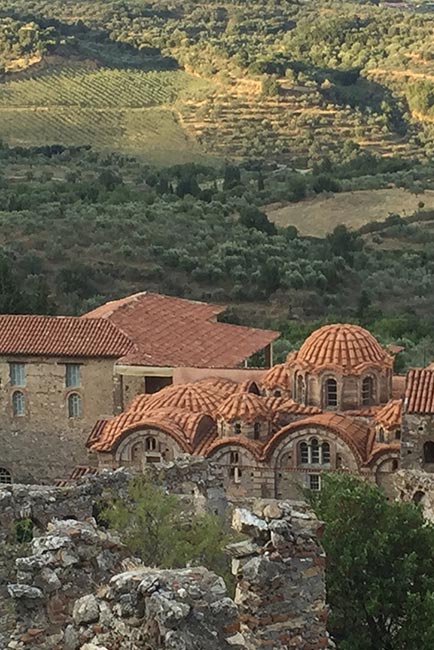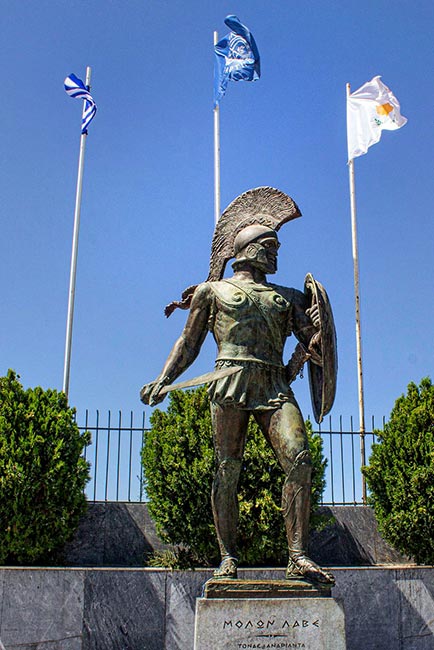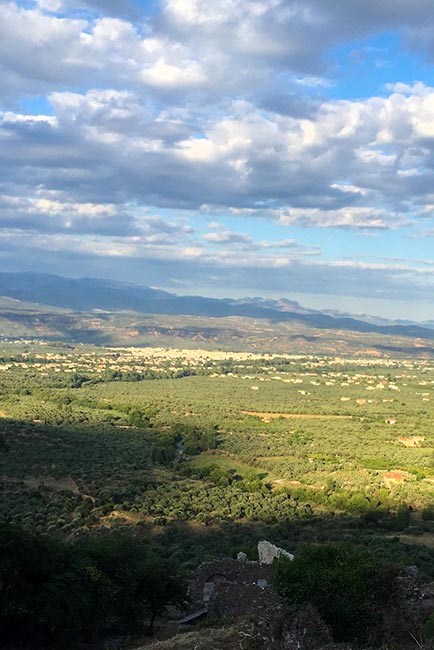Why Chania?
The organization of the 2025 event is particularly significant for ATHENA IOOC, as it marks its 10th anniversary. Thus, the choice of location for the competition needed to be equally iconic. For this reason and many others, Chania —the capital of the regional unit bearing the same name, located at the western end of Crete— is an ideal destination. Like the rest of Crete, it is deeply connected to the history and cultivation of the olive tree, and the everyday use of olive oil in the island's rich gastronomy and Cretan diet is essential. It is no coincidence that the renowned Mediterranean diet, a fundamental element of which is olive oil, is based on this.
On the other hand, Chania is one of the most beautiful cities on the island and one of the loveliest in Greece. The surrounding area is filled with olive trees, many of which are ancient. In the city of Chania and its surroundings, visitors discover authentic Cretan life, renowned Cretan hospitality, and the pleasures only the stunning Cretan nature can provide.
The importance of the olive tree in the lives of Cretans and their contribution to the global olive oil community is undeniable. A simple walk-through Chania's archaeological sites and museums reveals monuments, archaeological finds, and various exhibits that confirm this. A prime example is Aptera, the ancient fortress city from the 4th century BC, located just a few kilometers outside Chania. There, the findings testify to a prosperous commercial flourishing, political power, and influence (Aptera even had its own currency), among which is a unique building: a farmhouse with its own olive mill, preserving nearly all the oil-producing installations. This is just one of many elements that attest to the enduring history of the olive and olive oil in the Chania region.


Chania began to be built in 1320 and, according to archaeological evidence, is located on the ruins of ancient Kydonia. The old and modern cities have endless beauty and offer highly interesting tours. The old town has even been designated as a historical preserved monument, captivating visitors with its picturesque charm. Minoan, Byzantine, and Venetian walls, Venetian and modern mansions, and Christian and Muslim monuments and churches of various religions and doctrines all reflect the rich history of Chania, a city that has been a meeting point for many cultures, each leaving its indelible mark.
A landmark of Chania's allure, besides the imposing "Agora" building that dominates the city center, is the old Venetian harbor, renowned for its timeless beauty. The majestic lighthouse, standing proudly since the 16th century; the Neoria, an architectural gem of stone Venetian buildings with arched facades; the Küçük Hasan Mosque, now used as an exhibition space; and the Firka Fortress, an important historical monument, are just a few of the structures that have stood for centuries, reminding us of the struggles of the people of Chania for their independence.
The Olive Grove of Chania
Diving into history, a defining feature of the Chania olive grove is its hundreds of ancient olive trees, making it a global symbol of olive heritage. Some of these, like the famous olive tree of Vouvou in the Kastelli area, the olive tree of Palaio Roumata in Voukolies, and the olive tree of Samonas in Apokoronas, have been designated as monumental olive trees by the Cretan Olive Oil Association and attract numerous visitors. This olive grove spans the entire area of the Chania regional unit, with some parts included in the special protection zone of the “Natura 2000” ecosystem network. Furthermore, Crete is one of the Mediterranean's most historically and significantly olive-producing regions, playing a leading role in the olive oil trade and the spread of olive cultivation throughout Mediterranean European countries. It has also pioneered the promotion and establishment of olive oil as one of the healthiest foods for the human body through the Cretan diet.
Historically, according to archaeological findings, the wild olive tree first appeared during the Proto-Minoan period (3200-2600 BC) in southern Crete. Its cultivation flourished due to the Minoan kings, who elevated the olive to a sacred symbol. Archaeological excavations in various ancient historical centers, such as Knossos and Phaistos in Heraklion, Zakros in Lasithi, and Lissos, Elyros, and Aptera in Chania, testify that the domestication and systematic cultivation of olives began in Crete during the Minoan period. Many archaeologists attribute the significant economic flourishing of the Minoan era to the olive oil trade.
Today, the olive grove of Chania, with 8,2 millions olive trees and an annual olive oil production of 26,000 - 30,000 tons, is the second largest in Crete after Heraklion and one of the most important in Greece. Its area extends across 37,500 acres, spread throughout the Chania regional unit, excluding the major mountainous regions, occupying 65% of its cultivable land. As for olive cultivation, it closely follows tradition, while a considerable portion of the Chania olive grove also implements innovative certified organic farming practices. This olive grove starts almost at sea level and reaches about 750 meters, divided into two conceptual parts. The dominant feature of the Chania landscape is the White Mountains, which rise to 2,000 meters and traverse the entire regional unit, dividing it into northern and southern parts, as well as flatland and mountainous areas.


The climatic conditions of the Chania regional unit are ideal for olive cultivation, as it is considered the coolest area of Crete. It is surrounded by sea to the north, west, and east, which further moderates the Mediterranean climate, ensuring excellent conditions in both the fertile plains and the arid semi-mountainous and mountainous terrains of Chania. Additionally, mountain ranges act as a natural barrier, preventing the hot sirocco winds from the Libyan Sea from reaching the north. Conversely, they obstruct the moving air masses from the east, causing frequent rainfall that contributes to the ideal and diverse microclimate of each area and village.
The northern part of the olive grove belongs to the districts of Apokoronas, Kydonia, and Kissamos, which are flat and semi-mountainous regions with a significantly cooler climate than the south, with Kissamos leading in olive oil production. There, the Koroneiki variety dominates, accounting for 80% of the total production in Chania. In contrast, the Tsounati variety, originating from the Selino area in the south, is also found on a smaller scale.
The southern part of the olive grove is in the districts of Selino and Sfakia. Here, olive cultivation faces markedly different climatic conditions compared to the north, as the climate is primarily dry and quite warm, due to the sirocco and warm air masses coming from the Libyan Sea and the African coasts. However, both the Selino and Sfakia regions are semi-mountainous and mountainous, so the elevation partially offsets the dry and warm conditions, though the rugged terrain complicates access and even harvesting becomes a challenge for producers. Nevertheless, in the Selino area, the local Tsounati variety (Mastoid) takes center stage, considered the oldest olive variety in Greece, with a history that exceeds 3,000 years. It is thus exceptionally well-adapted to the challenging climatic conditions, as the southern side of the Chania olive grove is believed to be its birthplace. It produces olive oils with intense organoleptic characteristics, resulting in recent years in its cultivation expanding not only to the northern part of the Chania olive grove but also to other areas of Crete, such as Rethymno. Moreover, in the context of climate change, its natural resilience to the climatic conditions is a significant advantage. It is no coincidence that most of the monumental ancient olive trees in the Chania area belong to the Tsounati variety.
Three regions of Chania have been legislatively protected by the European Commission so that their olive oils can carry the Protected Designation of Origin (PDO): PDO Kolymbari Chania, PDO Apokoronas Chania, and PDO Selino Crete. Furthermore, all olive oil produced in Chania is entitled to carry the indication PGI Chania on its label.



